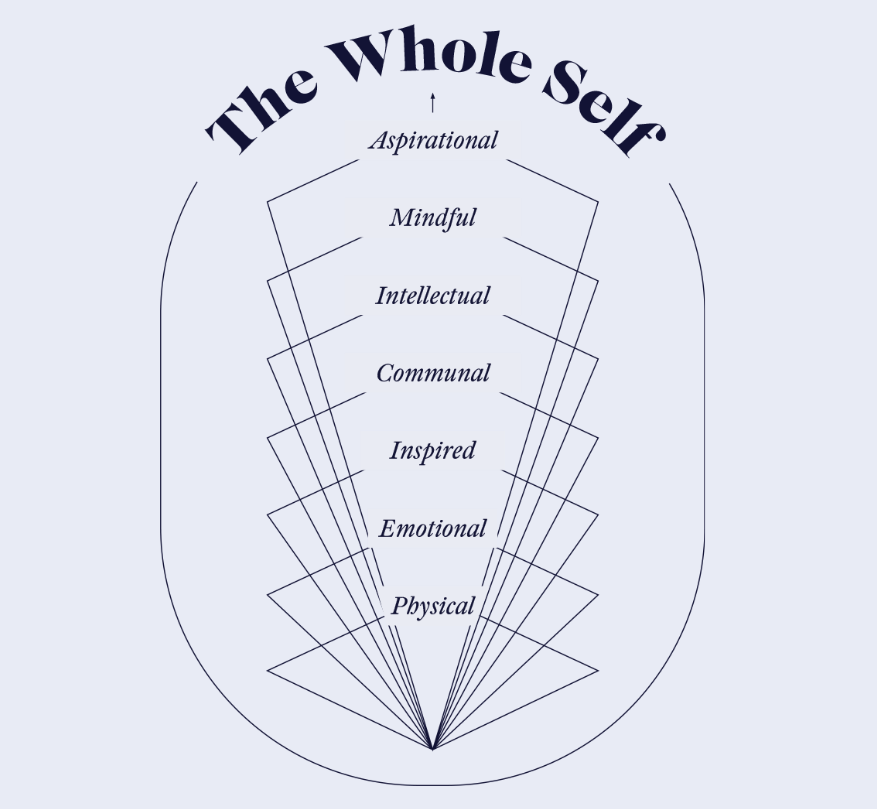The hidden gift of a crisis is the full-spectrum light it shines on what matters. During stressful moments, we are often forced to reassign our priorities to accommodate extreme circumstances. For some, that change is a simple matter of staying the course. But for others, the distance between everyday priorities and emergency priorities is so great, that the shift can feel traumatic. When you feel the impact of a true crisis, do you find that your priorities have been out of order? Where do you look for guidance to reorder them?
Applied Empathy is a way of working that begins with the self. While a self-centric empathy practice may sound counterintuitive, it is rooted in the plain fact that our understanding of others is limited by our own experiences. Said another way, it is impossible to respond to needs in others that we haven’t addressed in ourselves.
For the same reason airlines urge us to secure our own oxygen masks before assisting those around us, we as leaders must address our own wellness in order to support our teams, colleagues and clients. For example, if a member of my team tells me they are overwhelmed with anxiety and I haven’t addressed my own anxiety, I am likely to deflect, dismiss or derail that exchange. I might change the subject, offer an empty platitude, or worse, I may attempt to lessen their stress by minimizing it next to my own. But what I’m not going to be able to do is hear and respond to them with empathy.
In order to lead others meaningfully, we must begin with ourselves. Applied Empathy empowers us to do so with the Whole Self framework, a tool that helps us inventory and balance each aspect of our self. Understanding and attending to each of our parts equips us with the resilience to better meet others where they are while helping us identify our gifts, balance our biases and nurture opportunities for empathic leadership. Take the opportunity to consider your leadership through the lens of the Whole Self framework and how you rank in each of its seven areas:
- The Physical Self helps us explore the power of our presence and command of our body, serving as the foundation for more cerebral pursuits. How do you feel in your body right now? Have you eaten? Are you getting enough sleep, exercise, affection and play? How would you rate your relationship to physical care on a scale of 1 to 10 (with 10 being best)?
- The Emotional Self connects us to our personal needs, giving us the means to achieve greater understanding and self-knowledge. Think about what you are feeling right now. Is the feeling easy to describe? Are you feeling many different emotions at the same time? Is your ability to function dependent on suppressing your feelings? Using the same scale of 1 to 10, how would you rate your emotional wellness?

- The Inspired Self sparks our inherent desire to make, do and solve, informing both our intentions and our actions. The Inspired Self is about what drives you. When you get an idea that gives you a rush, or have an urge to push through challenges, this is the part of the self at work. When you feel determined, what is it that gives you the strength? How do you tap into your flow? Rate your ability to connect to inspiration on a scale of 1 to 10.
- The Communal Self enables us to understand how our individual strengths contribute to a stronger collective. Our communities provide us with opportunities to give and receive. Where do you find yourself giving, and where are you being replenished? Rate the balance of give and take in your relationships on a scale of 1 to 10, with one being very unbalanced, and 10 being perfectly balanced.
- The Intellectual Self puts our emotions and senses into concepts and words to clarify our perspective and communicate it. What are you learning? Where does your curiosity take you? Whose critique do you value? What new ideas are replacing old ones? Take a moment to rate yourself on your intellectual fitness. How engaged are you intellectually, on a scale of 1 to 10?
- The Mindful Self raises our consciousness for the present moment, our relationship with the world around us and our place in it. Where do you feel most present? How do you balance observing and participating? Do you feel connected and aware of the people and movements around you? How much does multitasking diminish your attention? Rate your mindfulness on a scale of 1 to 10.
- The Aspirational Self clarifies our vision for evolution, allowing us to experience clarity of purpose and giving our lives meaning. What is your purpose? Do you feel you have a mission that guides you? The Aspirational Self connects to a wisdom greater than the sum of our parts. For some, that wisdom feels spiritual, for others, philosophical, and still others regard it differently. Rate the clarity of your connection with purpose on scale of 1 to 10.
Look at the results of your self-assessment. As you navigate your path forward, notice where you may need support or attention. If you found unmet needs in yourself, consider where your response strategy may have similar vulnerabilities. How might you achieve restoration and balance for yourself and those you lead?
Working with Whole Self empathy is not easy. It means taking the extra time, asking the difficult questions and stopping to care for yourself when your default may be to push through. But with practice and commitment, I have seen leaders transform their work, their teams and their businesses by deeply investing in Whole Self empathy. From my seven selves to yours, I wish you clarity, insight and peace in the journey.




